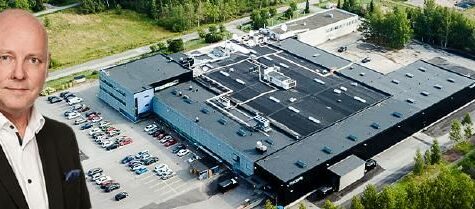FAST friends: cable and free ad-supported streaming TV
 Despite the many reports of cable television’s ever-eroding subscriber base, the fact is cable is still dominant in most of Europe. On the other hand, the reports of FAST’s rise are also true, though it remains in its infancy in Europe and still does not have the viewership numbers cable can claim. However, recently there have been signs that traditional cable technology and that of the internet-delivered FAST platforms actually are able to work together symbiotically and benefiting consumers, advertisers, and content owners alike.
Despite the many reports of cable television’s ever-eroding subscriber base, the fact is cable is still dominant in most of Europe. On the other hand, the reports of FAST’s rise are also true, though it remains in its infancy in Europe and still does not have the viewership numbers cable can claim. However, recently there have been signs that traditional cable technology and that of the internet-delivered FAST platforms actually are able to work together symbiotically and benefiting consumers, advertisers, and content owners alike.
FAST, in terms of consumer experience, is often compared to that of traditional cable – a lean-back experience where consumers can scroll through a massive EPG of channels to try and find what they want to watch live. But that’s where the comparison ends.
There are no MVPD (multichannel video programming distributor) in the FAST ecosystem so FAST channel providers don’t pay carriage fees. Instead, there are aggregators that collect and distribute content from a multitude of sources, creating linear channels, as well as on demand content for consumers. There are three types of aggregators:
1) Media companies who operate FAST channels: Pluto (Paramount), Tubi (Fox) etc. They are able to relay on unique content from their parent companies.
2) OEM (Original Equipment Manufacturer) FAST channels: The Roku Channel, Amazon Freevee, Samsung TV Plus, etc. The key advantage to these is that they are the centerpiece of the device’s user interface and have access to valuable viewing data.
3) Independent FAST channel apps: wedotv, Crackle and Plex. These operate independently and can be more experimental in their format and content offerings.
The strongest FAST channel aggregators use their curation prowess to set themselves apart across multiple territories, but often the same content is seen on several FAST channels. Cable companies, on the other hand, rarely overlap geographically so there’s no negative to having the same programming as their competitors. However, FAST channels benefit from being able to target advertising and promos more accurately and seamlessly than traditional cable.
Companies like Pluto TV and wedotv, have created a linear channel renaissance and that hasn’t been lost on the big cable subscription services. Discovery Plus, Paramount Plus and Peacock have their own linear services and many are following suit.
Meantime, in Europe, DVB-C, or Digital Video Broadcasting – Cable, which is the standard for the broadcast transmission of digital television over cable, is being experimented with. This is allowing FAST channels to be delivered on cable, and with it, dynamically delivered adverts. This also means that FAST channels are no longer dependent on OTT providers and can reach many more TV households. At wedotv, we’ve also worked with cable companies to have our AVOD service pre-installed on set-top boxes and our FAST channels delivered via cable companies’ IPTV offerings.
What does this mean for the future? Well, it could mean that the term FAST channel may just become obsolete. As revenues increase in FAST, the experience will improve. As a consequence, linear and FAST will will deliver the same experience to viewers whether it is to a connected or a cable environment. But even more important than the terminology is that we may just be moving toward the day when cable and OTT work together to expand the reach of channels. All consumers have to think about is that the TV shows and brands they love are easily accessible on the device they choose to watch them on.
Chris Sharp is co-CEO of wedotv, an AVOD service which also operates the FAST channels wedo movies and wedo big stories. wedotv and its FAST channels are available on broadcast, cable, IPTV, mobile and various CTV and FAST platforms in the UK, Germany, Italy, Switzerland and Austria.



